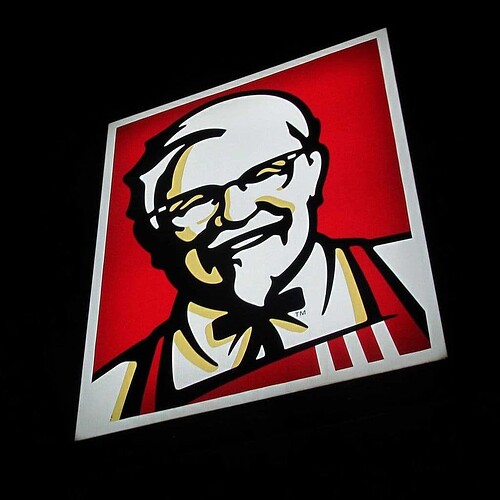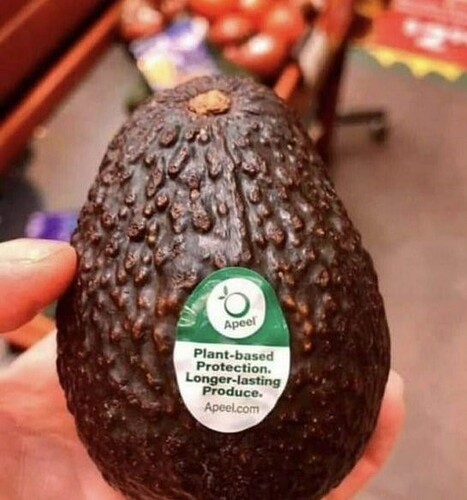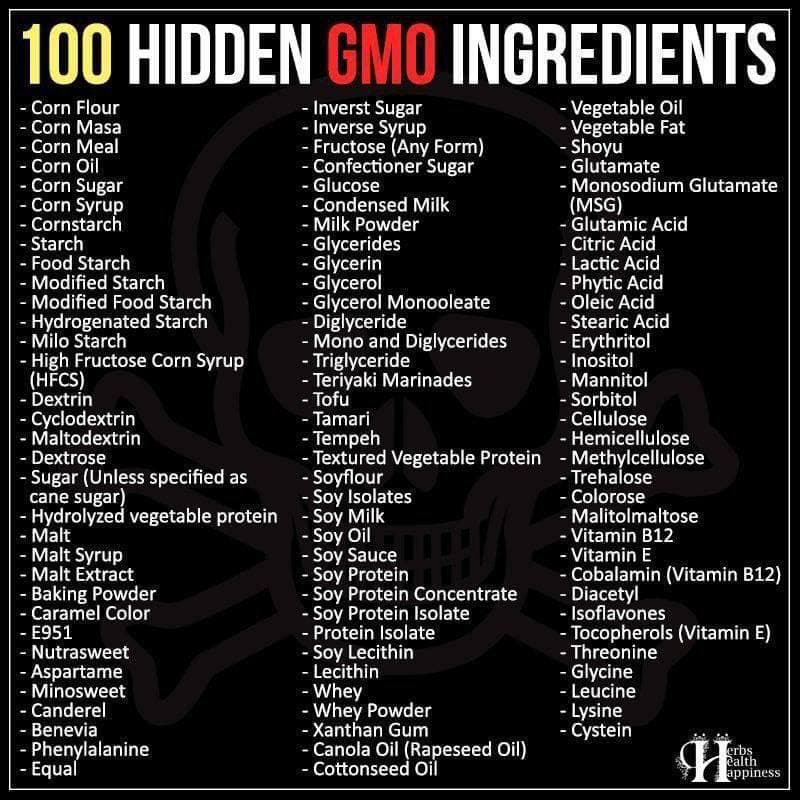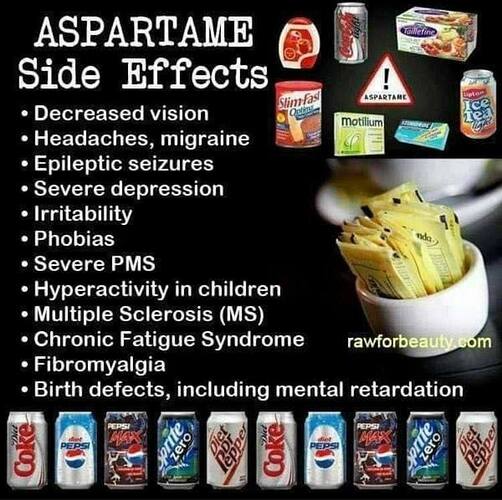https://articles.mercola.com/sites/articles/archive/2023/02/27/fak
Fake Meat Has a Real Problem
The fake meat industry, predicted to be worth $3 trillion, is being touted as an environmentally friendly and sustainable way to feed the world. In reality, however, the rise of fake meat and other animal foods is nothing more than an attempt to create global control over yet another food sector.
Globalists already have a monopoly on the grain industry with their patented GMO seeds, and once animal husbandry is eliminated and replaced with patented lab-grown meats, private companies will effectively control the food supply in its entirety. And, as so famously stated by Henry Kissinger, those who control the food control the people.
On top of that, lab-created meats may also turn out to be one of the most health-harming ultraprocessed foods ever created. Of course, the true impact on public health won't be seen for years or decades, but the preliminary evidence raises serious questions.
Will Lab-Grown Meat Cause Cancer?
Most cultured or cell-based meats are created by growing animal cells in a solution of fetal bovine serum (FBS). Aside from the fact that this "green" alternative requires the slaughter of pregnant cows in order to drain the unborn fetus of its blood, to get the cell cultures to grow fast enough, several companies are using immortalized cells.
As reported by The Fern,1 "Immortalized cells are a staple of medical research, but they are, technically speaking, precancerous and can be, in some cases, fully cancerous."
There's no cause for concern, though, The Fern claims, because according to "prominent cancer researchers" such as MIT biologist Robert Weinberg, Ph.D., it's "essentially impossible" for humans to get cancer when eating these cells because they're not human cells and therefore cannot replicate inside your body.
The problem, of course, is that there's no long-term research to really back such claims. The fact that "cow tumors sometimes wind up in store-bought ground chuck"2 and doesn't cause a problem does not mean that a piece of meat consisting of nothing but cancerous and precancerous cells won't have unpredictable effects.
The notion of "cancer burgers" is a PR nightmare that most cultured meat companies want to steer clear of, and they do so primarily by ignoring or dismissing the issue. As noted by The Fern:3
"Even if your nouveau meat doesn't cause cancer and isn't exactly made from cancer, having to say so repeatedly will inevitably turn off a great many potential customers. As one executive in the field told me, with a dose of comic understatement, there's a chance the whole thing really 'might bother some people' …
[I]nterviews with dozens of current and former employees, executives, investors, analysts and other insiders, as well as reviews of the companies' regulatory filings and past statements, make clear that the cultured meat industry is anxious about its use of immortalized cells and is doing what it can to avoid the subject.
In part, this is because scientists aren't as quick as journalists to use the words 'essentially impossible' in writing. Despite the informal scientific consensus around the safety of immortalized cells, there just aren't any long-term health studies to prove it …
The leading startups, for their part, are pressing ahead, nodding to their potential vulnerability with the occasional creepy waiver.
At Upside's facility in Emeryville, California … investors and pesky reporters tasting a cooked version of the final product have been asked to first acknowledge the lack of long-term health data. 'The cultured meat and related food products in the Tasting are experimental,' the company's waiver reads. 'The properties are not completely known.'"
Why Are Cancerous Cells Used?
The reason precancerous and cancerous immortalized cells are used in the first place is because normally-behaving cells cannot divide forever. Most cells will only multiply a few dozen times before they become senescent (old) and die. This won't work when your intention is to grow thousands of pounds of tissue from a small number of cells, hence they use immortalized cells that continue to divide indefinitely.
Some immortalized cell lines have been in continuous use since the early 1950s. The first immortalized cell line came from a woman with cervical cancer. Her cancer cells successfully replicated in a petri dish, ultimately becoming the cell line known as "HeLa," short for the woman's name, Henrietta Lacks.4
In medical science, the use of immortalized cell lines allows researchers to perform in vitro studies without the use of fresh cell samples. In the culturing of meat, it's what allows them to create a large volume of tissue from a small number of cells that never need to be replenished.
But immortalized cells are also, by definition, cancerous (or at bare minimum precancerous), as there's no off switch for their replication. To circumvent this PR problem, some companies are using embryonic stem cells rather than immortalized cells. Others are using cells from living animals.5 Both of these strategies, however, also destroy the argument that cultured meat is animal-free.
 Download the Entire Article for FREE
Download the Entire Article for FREE
Can You Trust Regulatory Approval?
The fact that our regulatory agencies are captured by industry and no longer seem to be taking public health into consideration only adds to the uncertainty, yet getting government approval is the industry's primary strategy to win public trust. As reported by The Fern:6
"How can the makers of cultured meat prove to regulators and skeptics that there's nothing to worry about? 'The best way is to give it to people and then ask them 20 years later or 30 years later, 'Has any of you gotten cancer at a higher-than-normal rate?'' says Weinberg. 'But that's not a practical experiment.'
The likeliest path for companies to set more people at ease is to win government approvals and put their products on plates. In November the FDA sent Upside Foods a 'no questions' letter in response to its application for approval, clearing the way for its chicken's final approval by the U.S. Department of Agriculture.
The FDA's safety assessment shows that its evaluation criteria included the chicken's potential for contamination and adulteration. It also notes that Upside monitors its immortalized cells to make sure they don't become cancerous or otherwise wig out.
In a footnote, the agency concluded that even fully cancerous cells would be safe to eat because they stop growing after they leave the bio-reactor, and cooking and digestion will break them down harmlessly.
'We did not identify any properties of the cells as described that would render them different from other animal cells with respect to safety for food use,' the FDA said. Even with the Upside approval, though, the uncomfortable truth is that none of the companies has data to prove their safety beyond every last doubt."
Bizarre Mixing of Animal and Plant Kingdom
Food scientists are also pushing the boundaries even further into the unknown by creating hybrid foods where animal and plant cells have been combined. Case in point: The Czech startup Mewery, founded in 2020, is working on a lab-grown pork alternative that is made up of 75% pork cells and 25% microalgae cells.7
Here, the microalgae is being used in lieu of FBS as the growth medium for a porcine cell line. FBS is notoriously expensive, so using microalgae is a major cost-saver. According to the founders of Mewery, the algae also infuses the cultured "pork" with added nutrients such as additional vitamins, antioxidants, minerals, fiber and essential fatty acids.
Eventually, they hope to produce cultivated minced meat products such as meatballs and sausage. The question is whether the human body will recognize these kinds of chimeric foods as usable nutrition. It might, but the potential for problems, especially in the long term, must not be underestimated.
'Pharma Food'
In the featured video at the top of this article, Dig It! interviews investigative journalist Elze van Hamelen about her research into the fake food industry, which she appropriately refers to as "pharma food."
As Hamelen notes, a key method in which the population is being programmed to accept these wholly unnatural foods is through the manipulation of jargon and redefinition of words. "Meat," for example, is no longer meat but "protein," the implication being that protein sources are largely interchangeable. Whether the protein is all-natural or not then becomes an unimportant side issue.
Hamelen points out that cultured meat is grown using the exact same process used by the drug industry when they culture viruses for vaccines. The "precision fermentation" techniques used in the fake meat industry also replicates that of drug manufacturing.
For example, insulin is made using genetically engineered bacteria that have a human insulin gene, causing them to churn out insulin during the fermentation process. In the same way, the fake meat industry is using genetically engineered microorganisms to produce flavors and other ingredients that go into the final product.
Traditional Ferments Versus Precision Fermentation
By using the term "fermentation product," the industry is also trying to convince you that it's no different from other fermented foods everyone is used to, such as beer, yogurt or kimchee. In reality, however, these naturally fermented foods bear virtually no resemblance to the ferments produced using genetically engineered microorganisms that are fed cheap sugars derived from genetically engineered corn and soy.
The use of GMO corn and soy alone put the "environmental benefits" of precision fermentation products on shaky ground. In addition to a base of sugars, hundreds of other ingredients may also be added to the ferment to produce the desired end product, such as a certain protein, color, flavor or scent.
Aside from the desired target metabolite, these gene-edited organisms may also be spitting out any number of non-target metabolites that have completely unknown environmental consequences and health effects.
The most-often used microorganism in fake food precision fermentation is E. coli, which is gene-edited to produce the desired compound through its digestive process. But they may also be spitting out any number of non-target metabolites that have completely unknown environmental consequences and potentially toxic health effects. Even cultured cells excrete waste catabolites that are toxic.
This is in stark contrast to traditional fermentation processes, which produce waste products that are edible by animals, compostable and pose no biohazard. Biowaste from genetically engineered synthetic biology ferments, on the other hand, must first be deactivated, and then it must be securely disposed of. It cannot go into a landfill.
Another potential hazard is the fact that the microbes used must be antibiotic-resistant, since they need to survive the antibiotics used to kill off other undesirable organisms in the vat. Considering antibiotic-resistant microbes are already wreaking havoc, causing infections that are extremely difficult to treat, the use of antibiotic-resistant microbes in food production could be a recipe for disaster.
It's almost certain that antibiotic-resistant organisms will be integrated into the final product. One potential outcome of this is the creation of novel foodborne illnesses, and what such illnesses might look like, or what the outcome might be, is anyone's guess.
As noted by Hamelen, the fake food industry is basically using terms that everyone is familiar with to deceive us, as the reality is completely opposite from what the public understands the term to mean. To learn more about the processes used to create fake meats and animal products, be sure to listen to the featured Hamelen interview.
Fake Meat Industry Launched by Intel Community Insider
Hamelen also reviews how the fake meat industry got its start. Around 2000, NASA sought to develop a way to produce food during extended space journeys, as it's impossible to bring an endless supply of food inside a space craft. In 2004, a nongovernmental organization (NGO) called New Harvest was founded, dedicated to "cellular agriculture" research.
This research institute put the cultured meat industry on the map by launching conferences and helping interested researchers to get together and share information. New Harvest was founded by Jason Metheny, whose resume reads like a Who's Who of the intelligence community.
He has multiple degrees from Johns Hopkins University and did Ph.D. research for the Bill & Melinda Gates Foundation. He's worked at DARPA and Oxford's Future of Humanity Institute. Currently, Metheny is also the CEO of Rand Corporation.
"Why would it be important for all these agencies that he's affiliated with to put this product on the market?" Hamelen asks. Ultimately, when you look at the food tech network, you come to realize that this technology is part and parcel of the technocratic agenda, which seeks to genetically modify everything within the plant and animal kingdoms, including humanity itself.
Not-So-Green Solutions
Industrial agriculture uses 75% of available farmland yet produces just 30% of food consumed globally. This shocking statistic is part of the narrative for why we need a new and more sustainable food system.
What's left out of the conversation, however, is that small biodiverse farms use just 25% of land yet provide 70% of our diet,8 so eliminating traditional farming altogether is like throwing the baby out with the bathwater.
What's more, studies have repeatedly shown that regenerative and biodynamic farming practices effectively lower demand on valuable resources like water, don't require synthetic fertilizers and produce greater yields than GMO monocultures. It also rebuilds rather than destroys soil, supports animal welfare and promotes biodiversity of plants and wildlife.
When animals are raised according to regenerative agriculture, a complete ecosystem is created, one that is both healing for the land and productive for the farmers who keep it. Eating meat is not synonymous with harming the environment: It's industrial farming practices that inflict the damage.
If the goal was to safeguard the environment, combat climate change and optimize food production and human nutrition, then transitioning to biodynamic farming methods would be the obvious solution. Yet it's made out to be the enemy of the planet and mankind.
Regenerative Farming Has a Negative Carbon Footprint
For example, in 2019, Impossible Foods directly attacked regenerative ranching,9 claiming grass fed cattle ranching generates higher amounts of greenhouse gas emissions than cows raised in concentrated animal feeding operations (CAFOs).
But according to a third-party lifecycle analysis10 (LCA) performed by the very same company that conducted Impossible Burger's LCA, the carbon footprint of beef from White Oak Pastures (a regenerative farm) is 111% LOWER than conventional CAFO beef, as the "system effectively captures soil carbon, offsetting a majority of the emissions related to beef production."
All things considered, including enteric emissions, manure emissions, soil carbon capture, vegetation carbon, miscellaneous farm activities, slaughter and transport, the total net carbon emissions from the beef production on White Oak Pastures was found to be a negative 3.5 kilos (kg) of carbon emissions per kilo of fresh meat, making this integrated, holistic system six times more carbon efficient than the average CAFO production model.
Meanwhile, Impossible Foods' soy-based fake meat is still a carbon emitter. While grass fed beef has a net carbon sink of 3.5 kg per kg of fresh meat, conventional soybeans produce 2 kg of carbon emissions for each kg of food, and pea protein (which Beyond Burger uses for its meat substitute) produces 4 kg of carbon for every kg of food.11
So, how can fake meat be considered more environmentally sound than regenerative farming? In addition to still being a carbon emitter, GMO soy also does nothing to regenerate and build soils, nothing to protect our insect and wildlife population, nothing to increase plant diversity and nothing to improve human health of consumers.
On the contrary, corn and soy, both conventional and GMO, are rapidly eliminating grasslands and prairies across the U.S. as they're converted into monocrop farm fields, and this may be one of the worst environmental impacts of all, as prairies help retain water and sequesters carbon in the soil.
Failed Rhetoric Is Being Recycled
In the foreword to Navdanya International's report "False Solutions That Endanger Our Health and Damage the Planet," Vandana Shiva, Ph.D., details how lab-grown foods are catastrophic for human health and the environment, as they are repeating the mistakes already made with industrial agriculture:12
"In response to the crises in our food system, we are witnessing the rise of technological solutions that aim to replace animal products and other food staples with lab-grown alternatives. Artificial food advocates are reiterating the old and failed rhetoric that industrial agriculture is essential to feed the world.
Real, nutrient-rich food is gradually disappearing, while the dominant industrial agricultural model is causing an increase in chronic diseases and exacerbating climate change. The notion that high-tech, 'farm free' lab food is a viable solution to the food crisis is simply a continuation of the same mechanistic mindset which has brought us to where we are today — the idea that we are separate from and outside of nature.
Industrial food systems have reduced food to a commodity, to 'stuff' that can then be constituted in the lab. In the process, both the planet's health and our health have been nearly destroyed."
Fake Food Industry Wants Cradle to Grave Control
It's becoming quite clear that the fake food industry is seeking to monopolize the food industry from cradle to grave. As detailed in "Got MilQ?" they're even working on synthetic breast milk. Biomilq, for example, is made from cultured breast tissue,13 and is funded by a long list of ultrawealthy globalists, including Bill Gates, Jeff Bezos, Mark Zuckerberg, Richard Branson, Masayoshi Son, Jack Ma, Michael Bloomberg and Marc Benioff.14
Another company, Helaina, aims to create glycoproteins "identical to those found in breast milk,"15 which can then be added to a variety of infant formulas and seniors' nutrition.
The first Biomilq product is expected to be ready for the market within the next three to five years.16 Other animal-free milk products are expected to hit the shelves sometime between 2023 and 2024.17,18 That includes ice cream made with lab-grown diary, which will go into Ben & Jerry's product line.19
Lab-Made Meats Are Ultraprocessed Junk Food
It's important to realize that all lab-created "foods" — including faux meats — are ultraprocessed, and will likely impart the same kind of ill health effects as other ultraprocessed foods, even if they don't turn out to be more acutely toxic.
In 2018, Friends of the Earth (FOE), a grassroots environmental group, released a report that posed critical questions about the trend toward synthetic biology. In it, they stressed the highly-processed nature of these products:20
"Various 'processing aids' are employed to make some of these products, including organisms (like genetically engineered bacteria, yeast and algae) that produce proteins, and chemicals to extract proteins.
For example, chemicals like hexane are used to extract components of a food, like proteins (from peas, soy, corn etc.) or compounds (from genetically engineered bacteria) to make xanthan gum … disclosure of these ingredients is not required.
Other processing aids (e.g. bacteria, yeast, algae), including those that are genetically engineered to produce proteins, are also not currently required to be disclosed on package labeling. The lack of transparency makes it difficult to assess the inputs and impact of their use."
Basically, what the globalist cabal is attempting to do is to eliminate conventional farming methods like raising cattle for beef and dairy products, and replace them with synthetic, patented reproductions. In short, they're taking whole foods and turning them into ultraprocessed junk foods, all while trying to convince you that junk food is healthier for you. Don't fall for it.
Protect Your Health by Avoiding Frankenfoods
By replacing real animal foods with patented lab-made alternatives, globalists will have unprecedented power to control the world's population. It'll also grant them greater control over people's health. It's already known that the consumption of ultraprocessed food contributes to disease,21 and the benefactor of ill health is Big Pharma.
The processed food industry has spent many decades driving chronic illness that is then treated with drugs rather than a better diet. Synthetic foods will likely be an even bigger driver or chronic ill health and early death.
The fact is, fake meat and dairy cannot replace the complex mix of nutrients found in grass fed beef and dairy, and it's likely that consuming ultraprocessed meat and milk alternatives may lead to many of the same health issues that are
processed food diet. So, if you want to really protect your health and the environment, skip pseudofoods that require patents and stick to those found in nature instead. )





